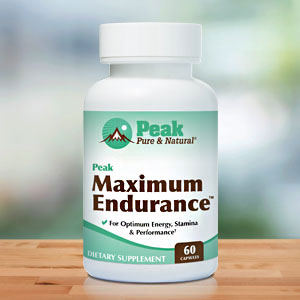Get Easy Health Digest™ in your inbox and don’t miss a thing when you subscribe today. Plus, get the free bonus report, Mother Nature’s Tips, Tricks and Remedies for Cholesterol, Blood Pressure & Blood Sugar as my way of saying welcome to the community!
The truth about exercise and dying early

Study after study has shown that regular physical activity helps reduce the risk of cardiovascular disease (CVD) and premature death.
In fact, running was found to increase lifespan by reducing death risk by 40 percent. But there are many ways to exercise and many levels as well.
For optimal health benefits, the U.S. Department of Health and Human Services (HHS) currently recommends people get 150 to 300 minutes of moderate exercise every week or 75 to 150 minutes of vigorous exercise per week — or an equivalent combination of both intensities.
But what happens if you get more exercise than that? When it comes to protection from early death, is there such a thing as too much exercise? A team of international researchers recently looked into that question, and the answers were reassuring….
Getting enough exercise lowers death risk
To get to the bottom of whether more is better or worse, researchers examined mortality data and medical records for more than 100,000 adults over 30 years.
The participants came from two studies — the all-female Nurses’ Health Study and the all-male Health Professionals Follow-up Study from 1988 to 2018. Their average age was 66 years and their average body mass index (BMI) was 26 kg/m2. About 63 percent of the participants were women and more than 96 percent were white adults.
And every two years, participants used a validated questionnaire to self-report their physical activity during leisure time. The questionnaires were updated and expanded every two years and included questions about health information, physician-diagnosed illnesses, family medical histories and personal habits such as cigarette smoking, alcohol consumption and exercise frequency.
The participant’s average time spent per week on various physical activities over the past year was reported as exercise data. The activities were further separated into two categories: a moderate category which included activities like walking, weightlifting, calisthenics and other lower-intensity exercises; and vigorous, which included things like jogging, running, swimming, bicycling and other aerobic exercises.
“The potential impact of physical activity on health is great, yet it remains unclear whether engaging in high levels of prolonged, vigorous or moderate-intensity physical activity above the recommended levels provides any additional benefits or harmful effects on cardiovascular health,” says Dr. Dong Hoon Lee, a research associate at the Harvard T.H. Chan School of Public Health in Boston. “Our study leveraged repeated measures of self-reported physical activity over decades to examine the association between long-term physical activity during middle and late adulthood and mortality.”
According to the study results, individuals who got the amount of moderate exercise recommended by HHS had a 20 to 21 percent lower risk of death from all causes. And those who did the HHS-recommended amount of vigorous exercise had a 19 percent lower risk of all-cause mortality.
The reduction was even greater for people who got two to four times the recommended amount of exercise. People who engaged in two to four times the recommended amount of vigorous physical activity (150 to 300 minutes a week) had a 21 to 23 percent lower death risk. Those who did two to four times the recommended amount of moderate exercise (300 to 600 minutes a week) experienced a 26 to 31 percent decline in risk of mortality.
Even greater protection against cardiovascular mortality
When looking solely at CVD mortality, those who met the guidelines for moderate exercise observed a 22 to 25 percent reduction, and those who were within the guidelines for vigorous exercise experienced a 31 percent lower risk. Increasing the amount two to four times above guidelines resulted in a 28 to 38 percent CVD risk reduction in the moderate exercise group and 27 to 33 percent lower risk in those who did vigorous exercise.
To top it off, no harmful cardiovascular effects were found in individuals who got more than four times the recommended minimum activity levels. Previous studies have found a connection between long-term, high-intensity endurance exercises like marathons and triathlons and an increased risk of heart issues like myocardial fibrosis, coronary artery calcification, atrial fibrillation and sudden cardiac death.
However, engaging in more than four times the recommended weekly exercise minimum didn’t provide any additional death risk reduction.
“This finding may reduce the concerns around the potential harmful effect of engaging in high levels of physical activity observed in several previous studies,” Lee noted.
Right now, you may be getting less than 75 minutes of vigorous exercise or less than 150 minutes of moderate exercise every week. If that’s the case, you may want to consider gradually adding a few minutes to each workout to get those numbers up to the recommended minimum.
For instance, if you’re walking for 20 minutes five times a week, start out by adding 5 minutes to each walk. Then a few weeks after that, add an additional 5 minutes per walk to get you to that 150-minute mark.
Be sure to stick with it. It’s not your imagination that exercise gets harder the less you do. So consistency is an important factor in your success.
Editor’s note: There are perfectly safe and natural ways to decrease your risk of blood clots including the 25-cent vitamin, the nutrient that acts as a natural blood thinner and the powerful herb that helps clear plaque. To discover these and other secrets of long-lived hearts, click here for Hushed Up Natural Heart Cures and Common Misconceptions of Popular Heart Treatments!
Sources:
New study finds lowest risk of death was among adults who exercised 150-600 minutes/week — American Heart Association














